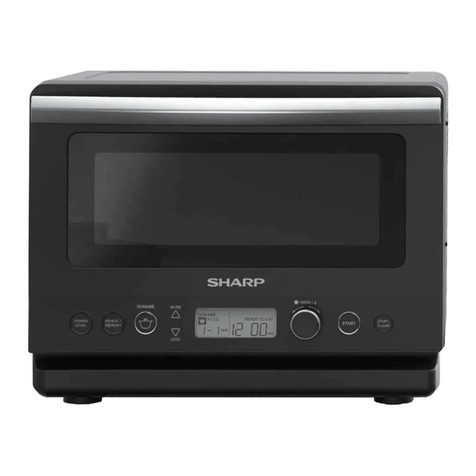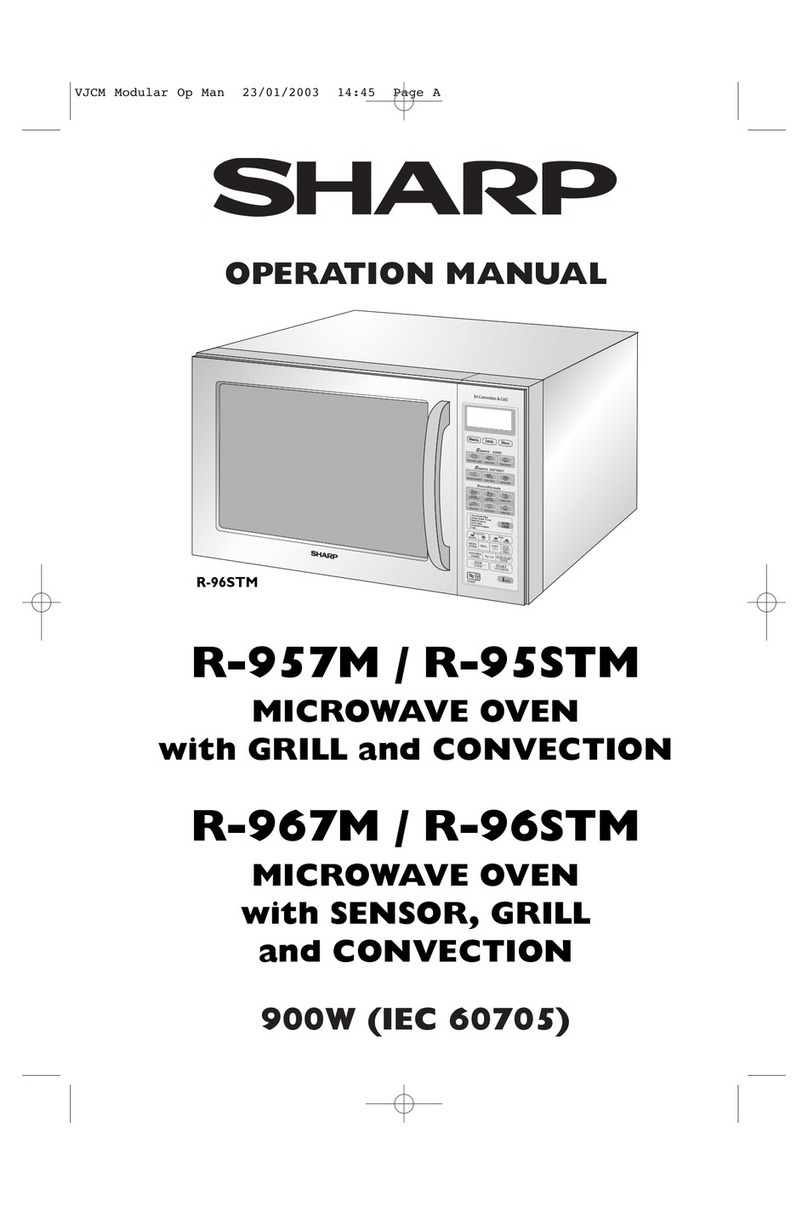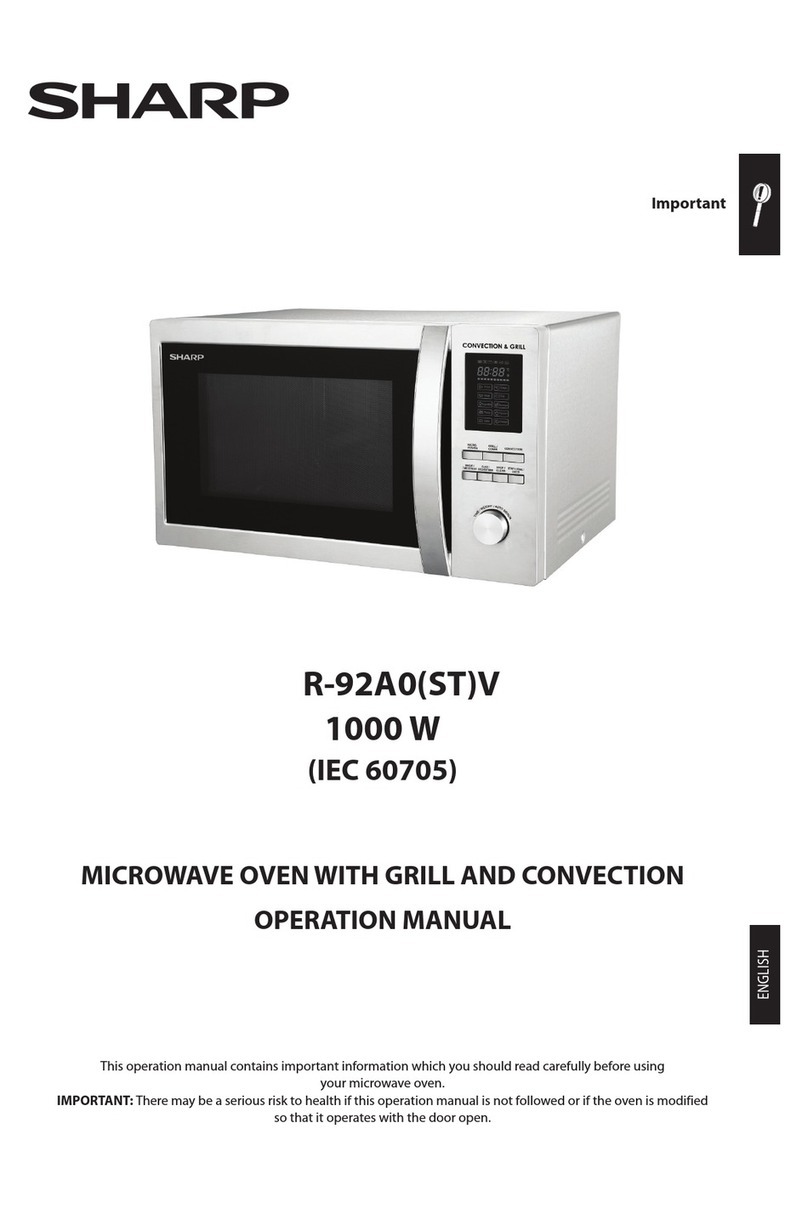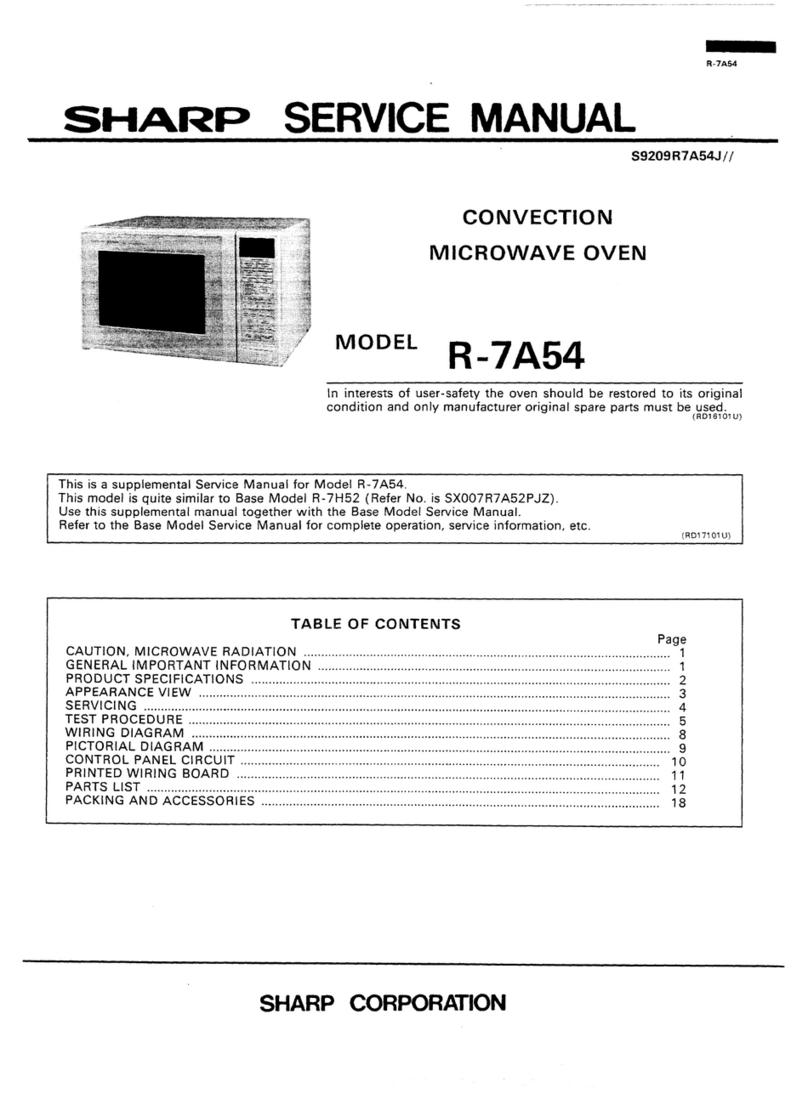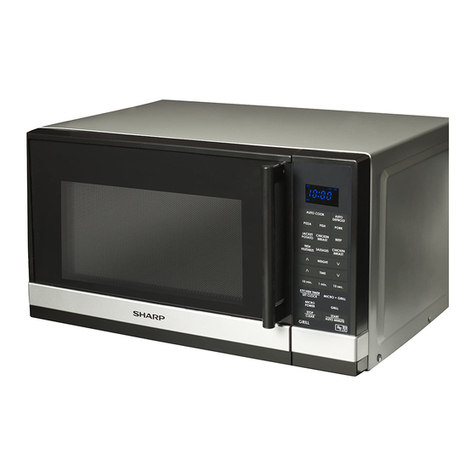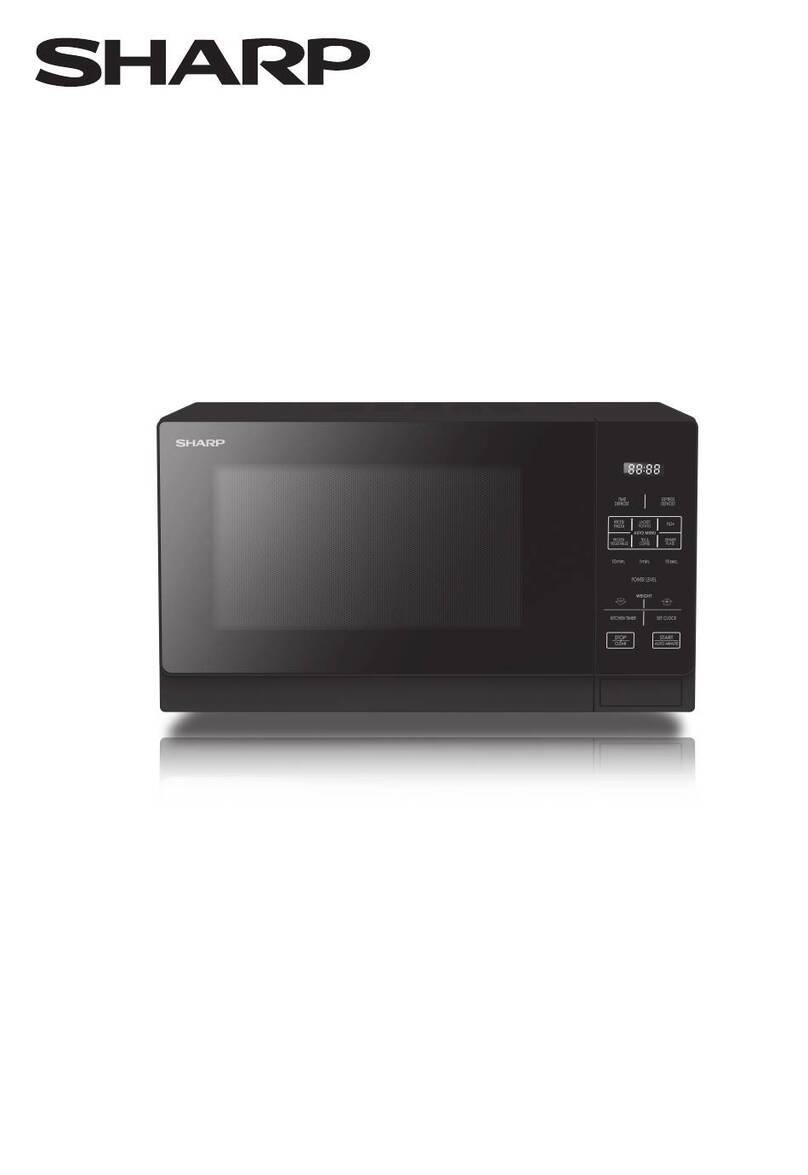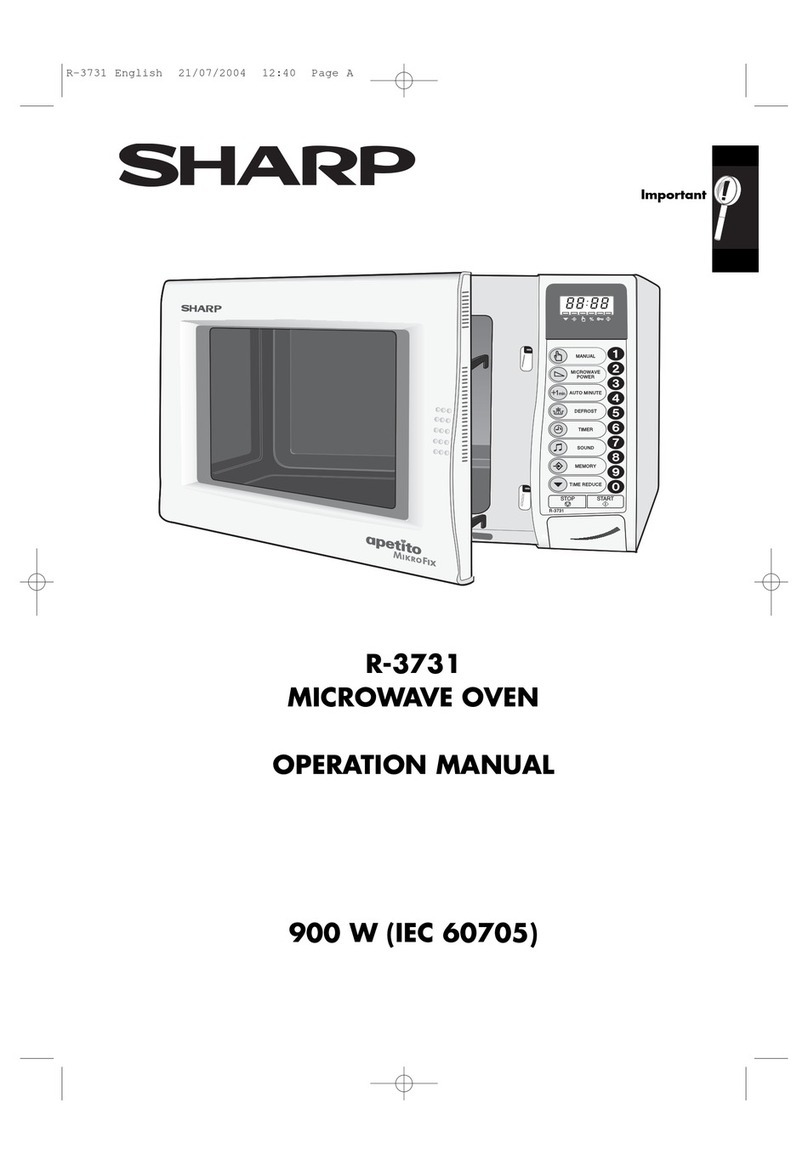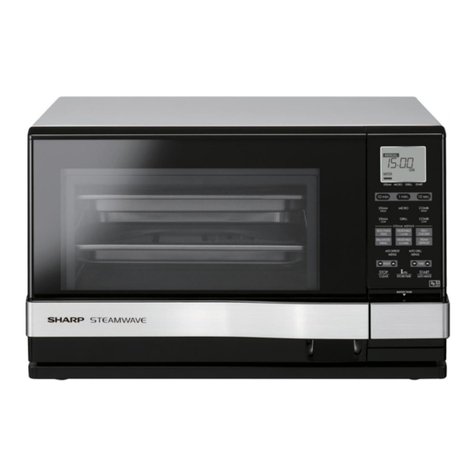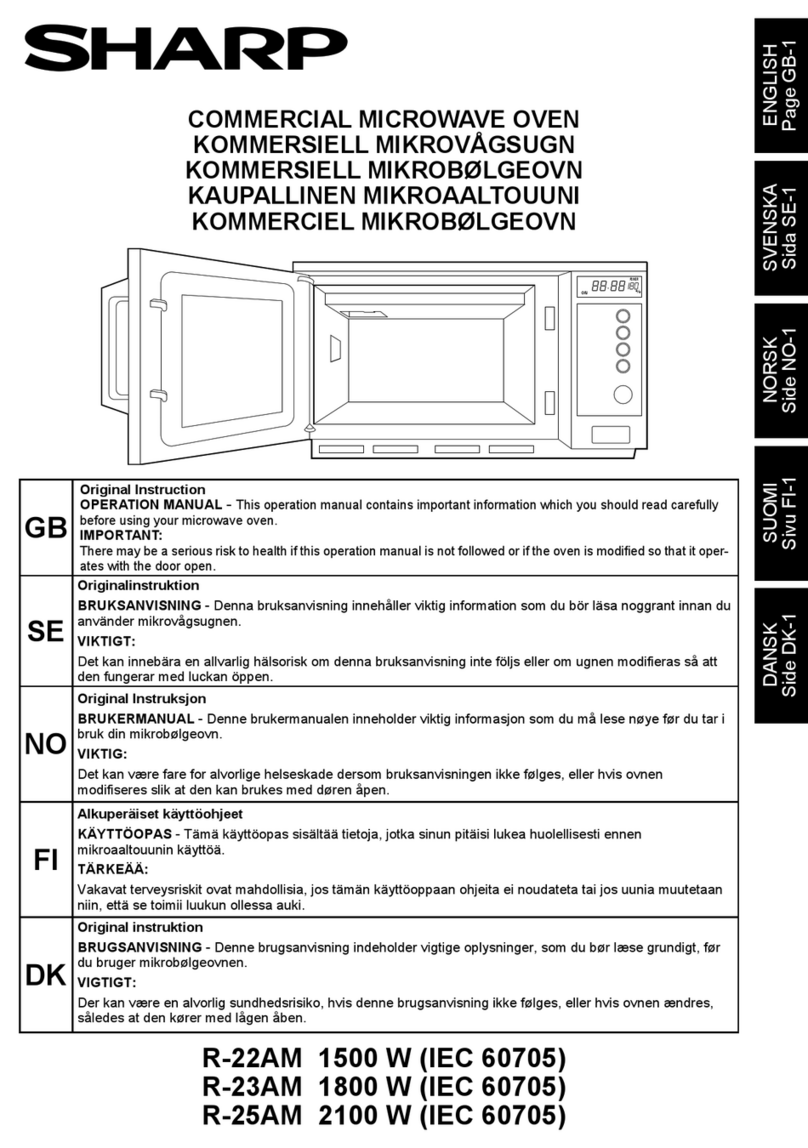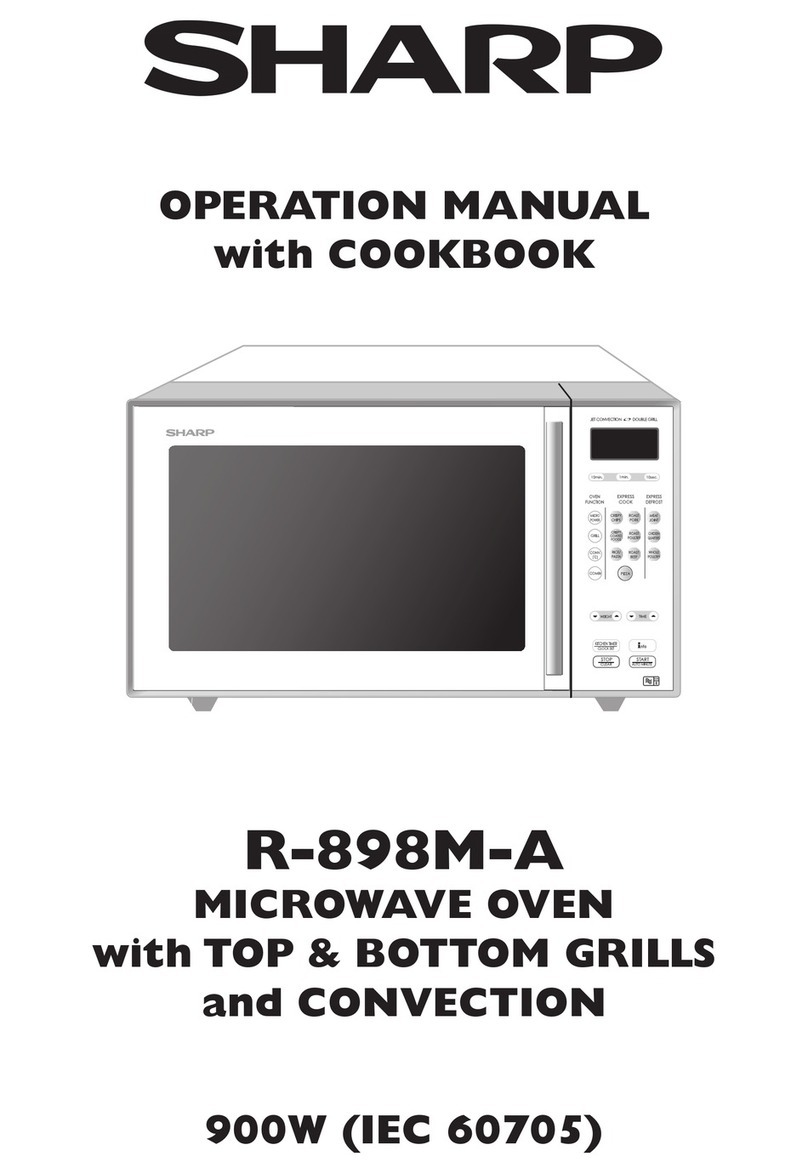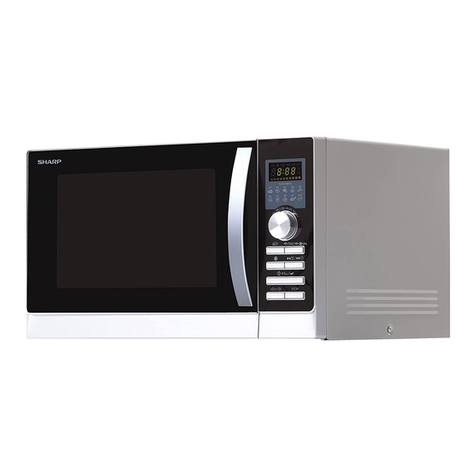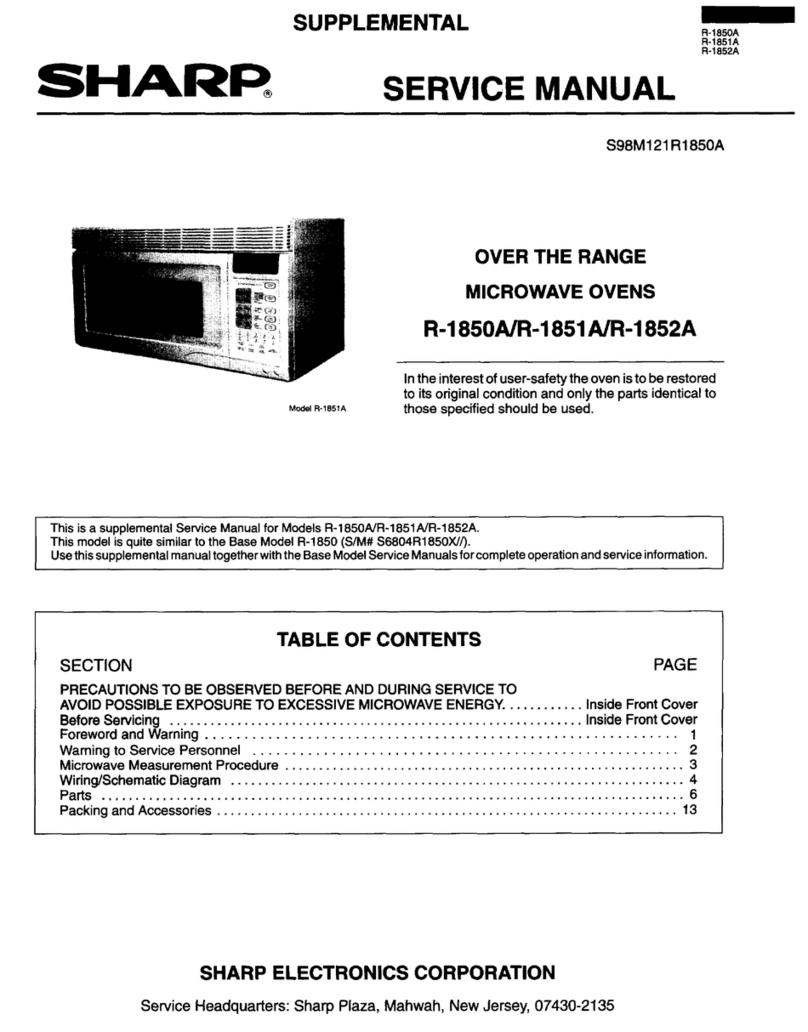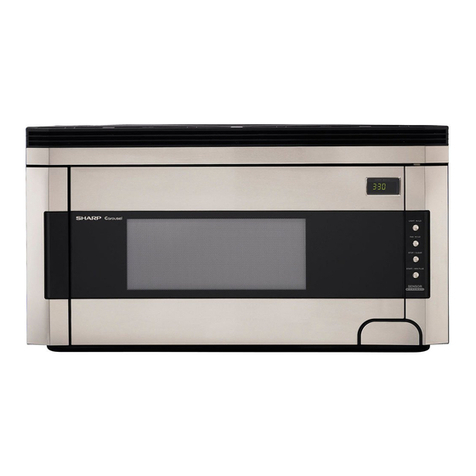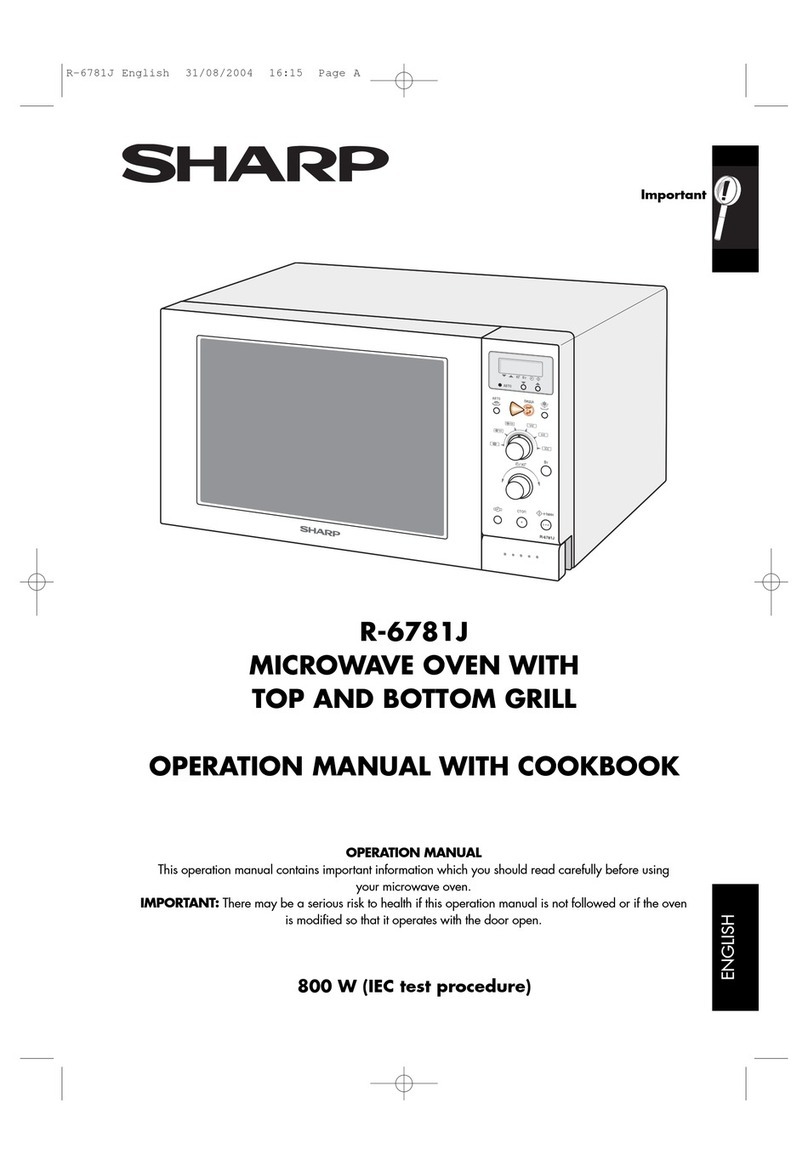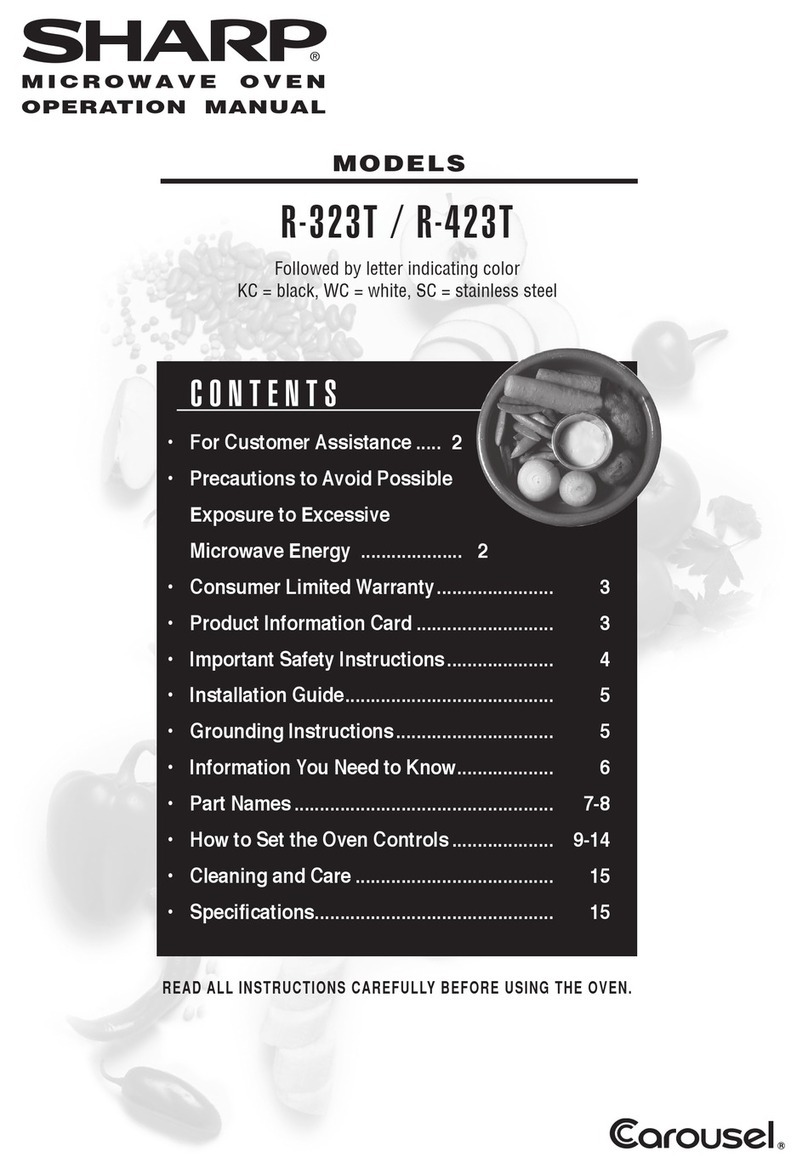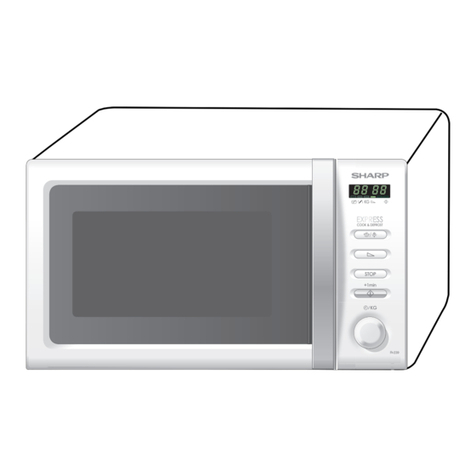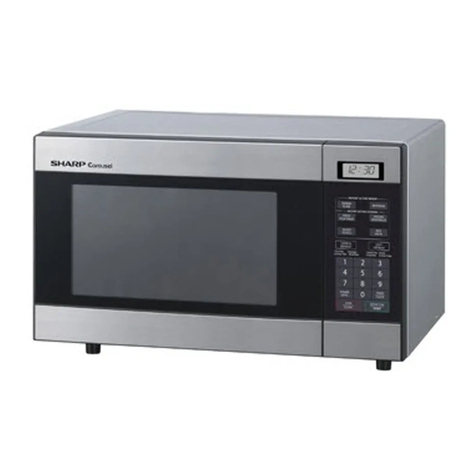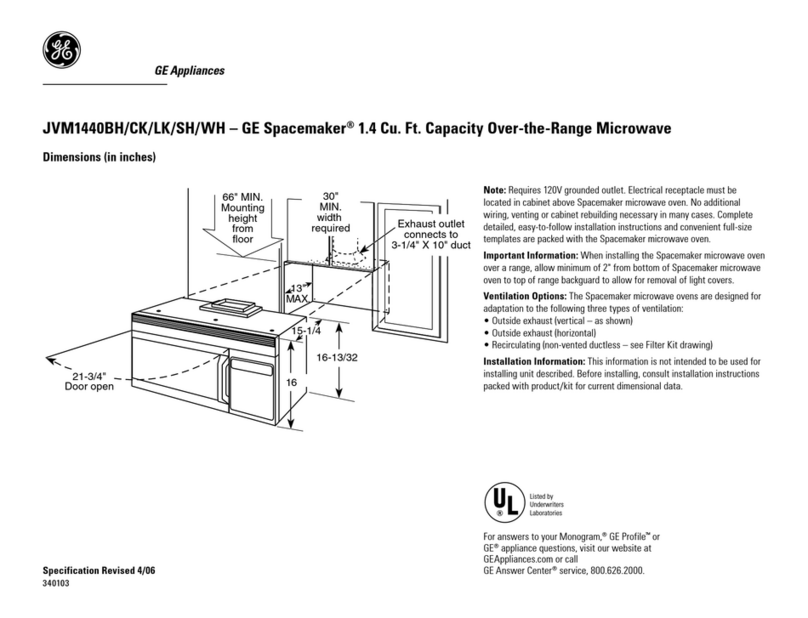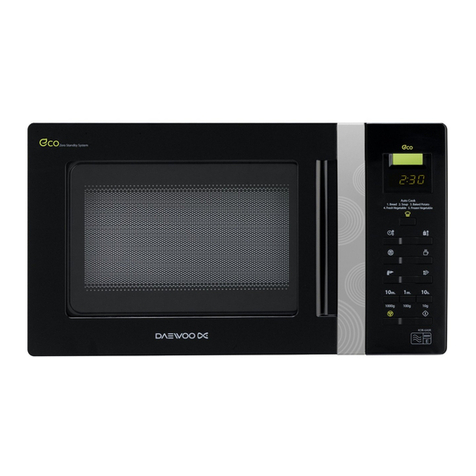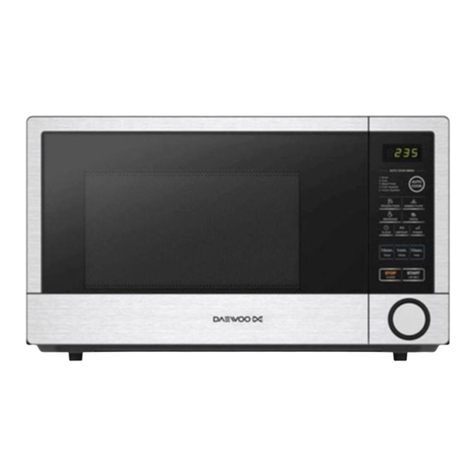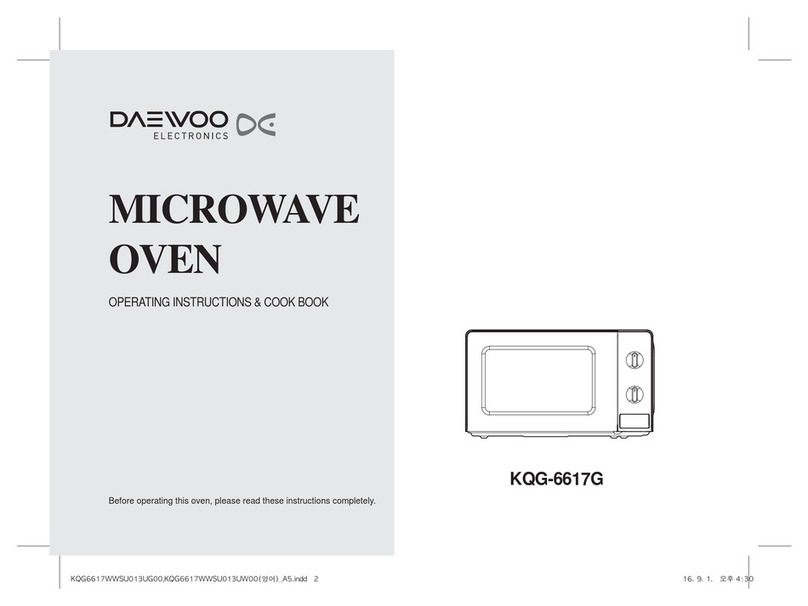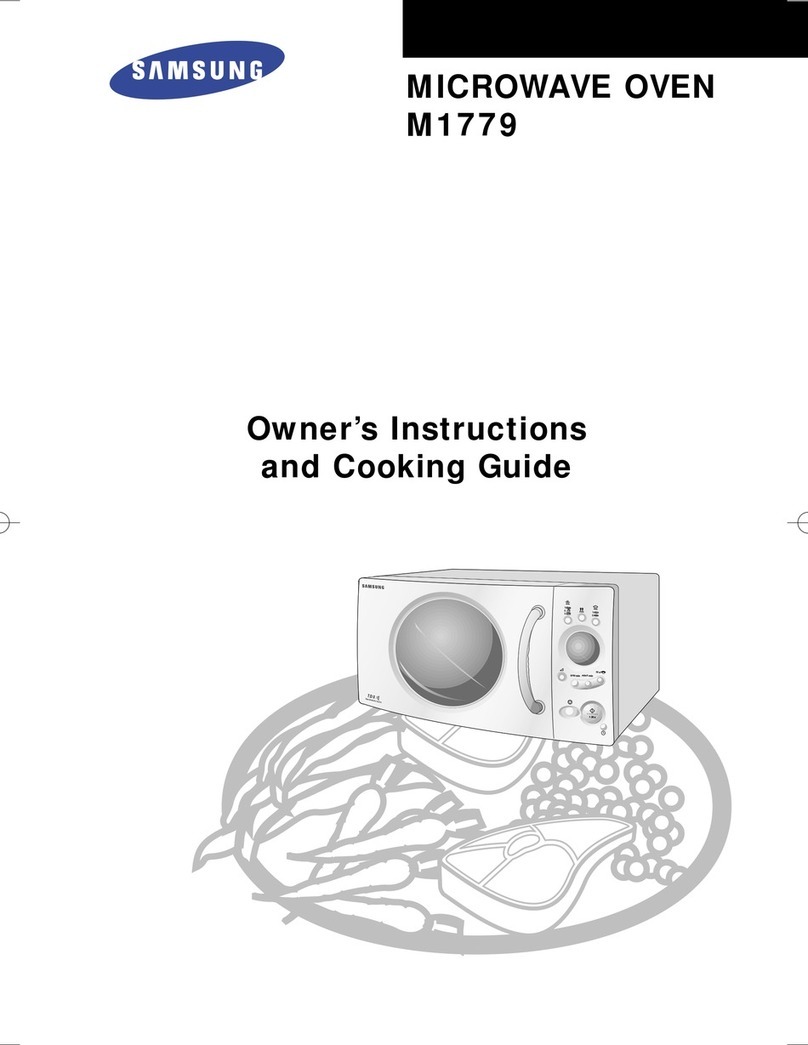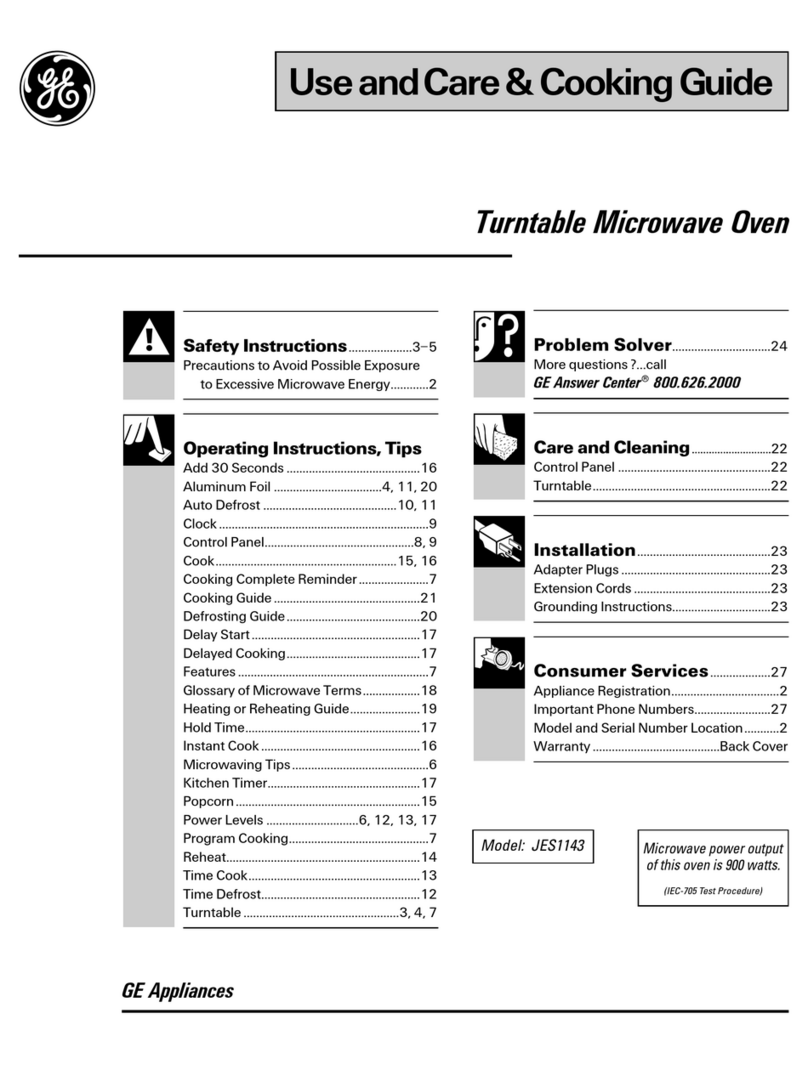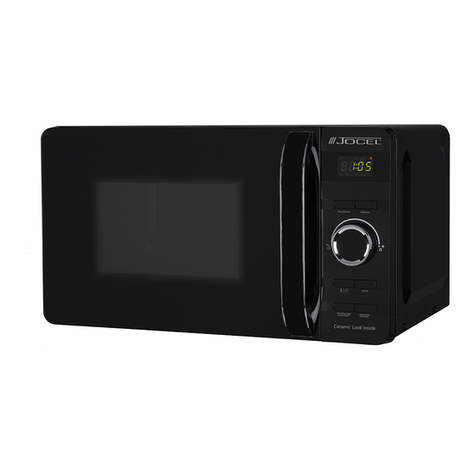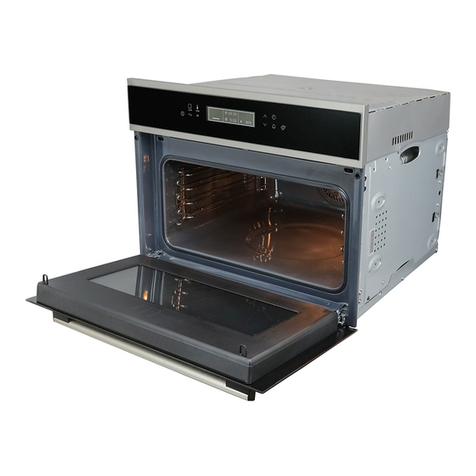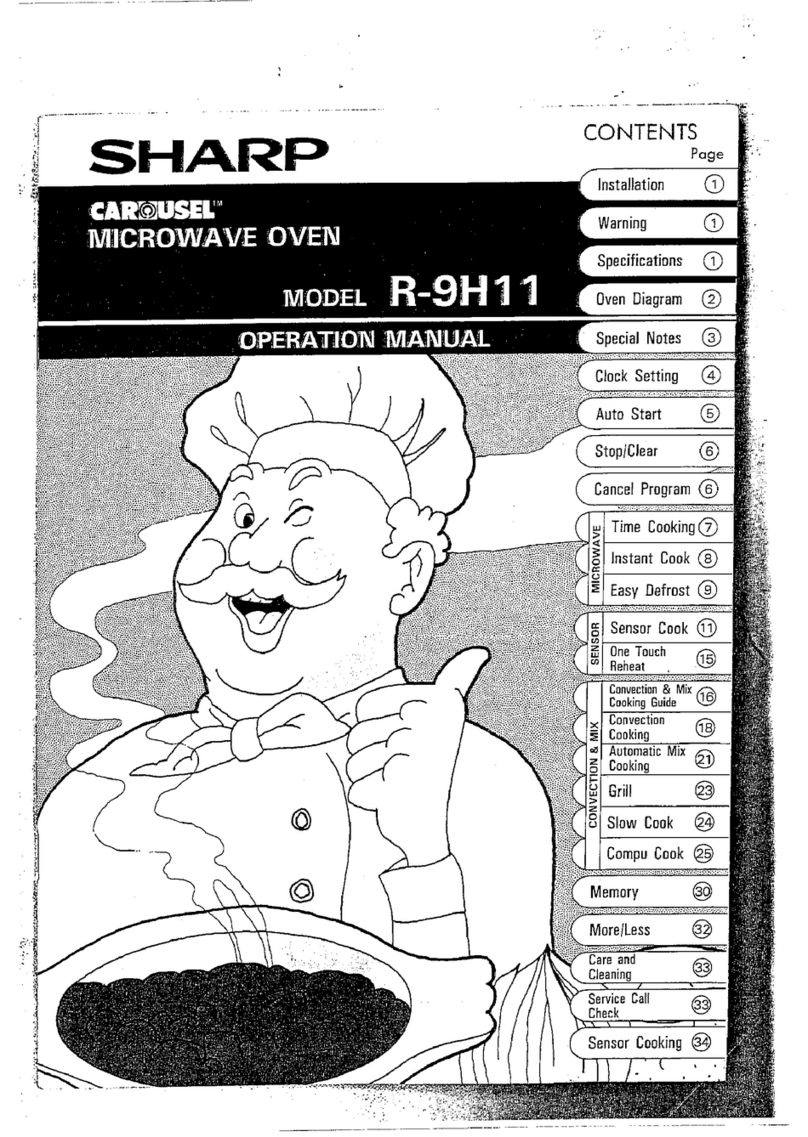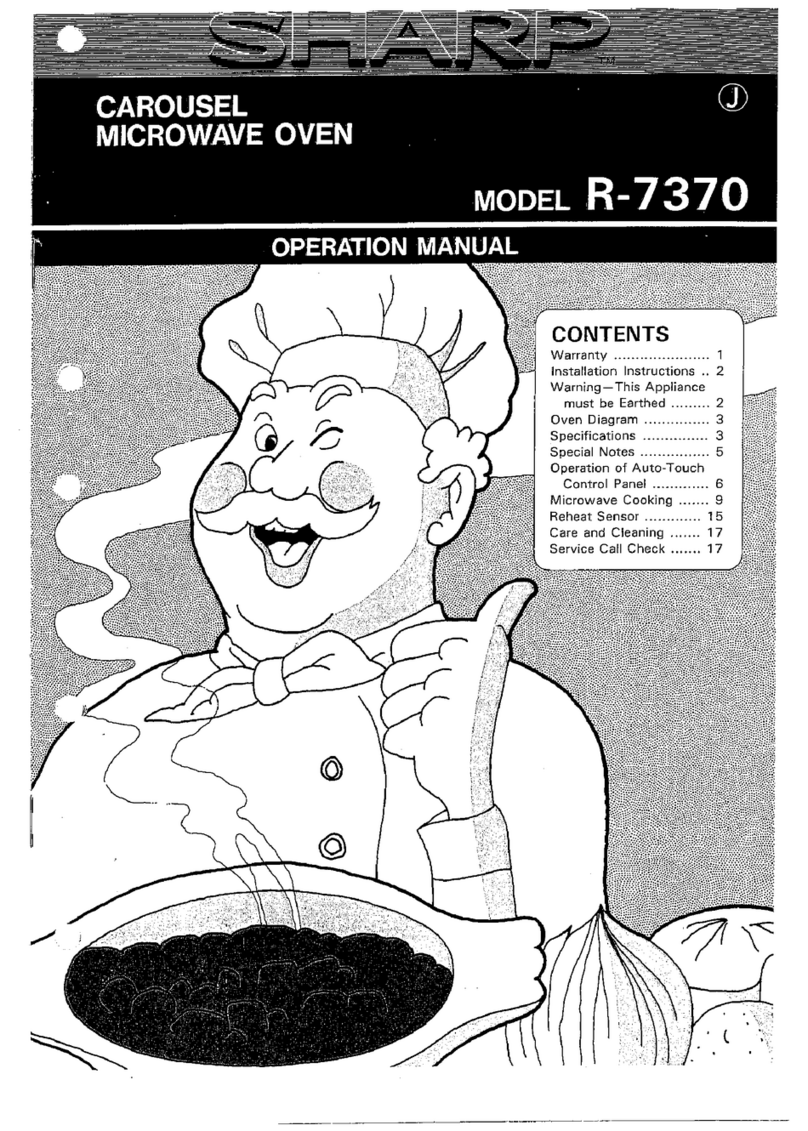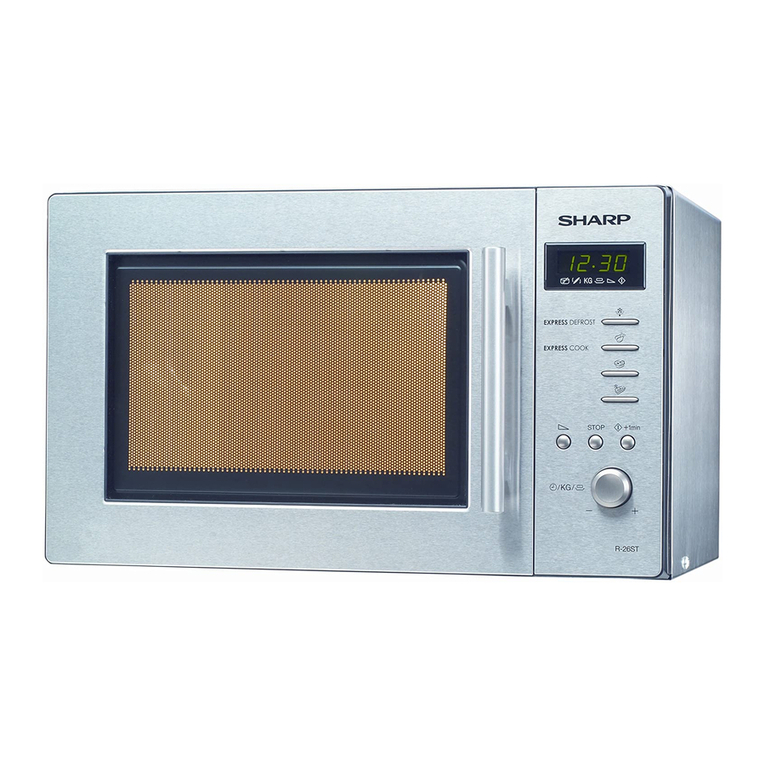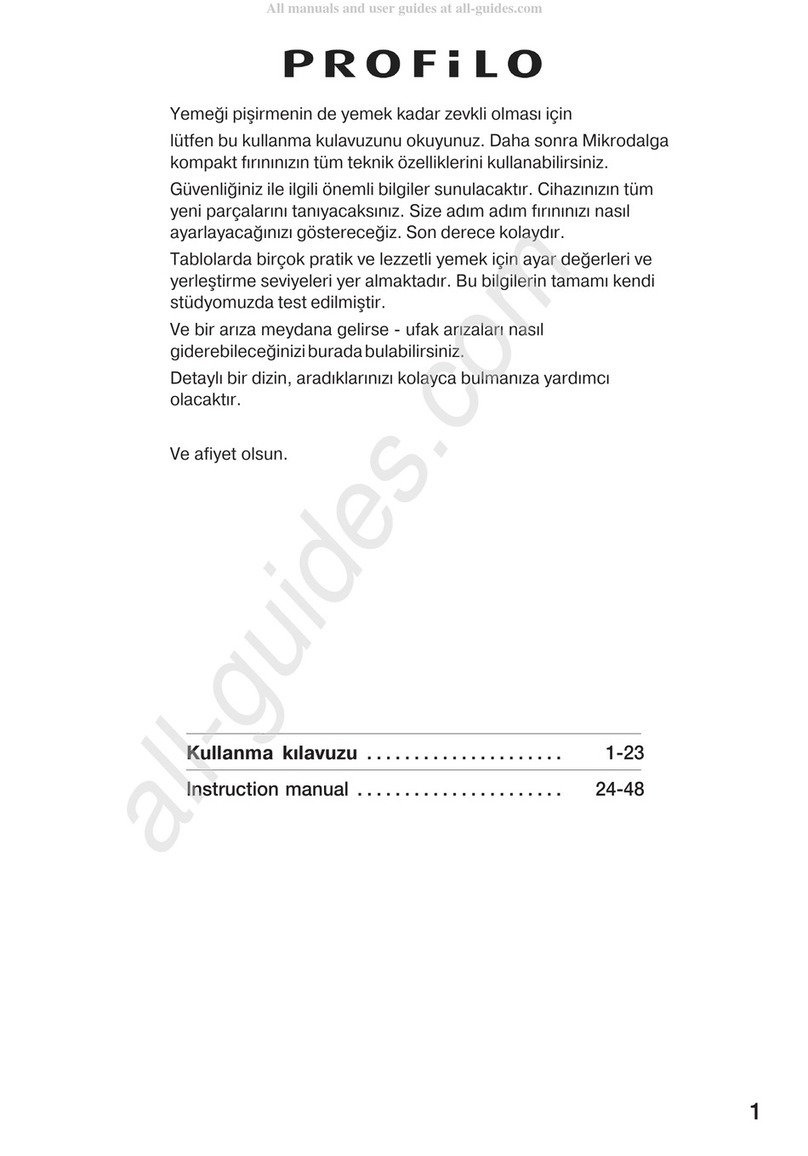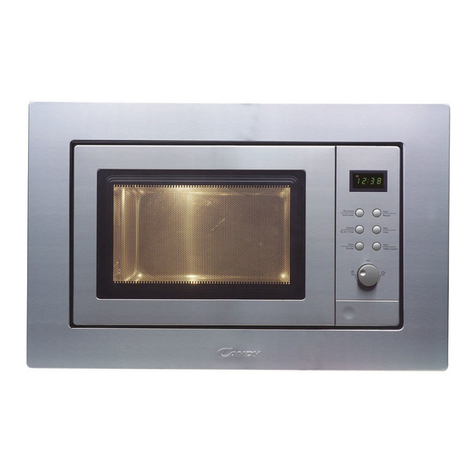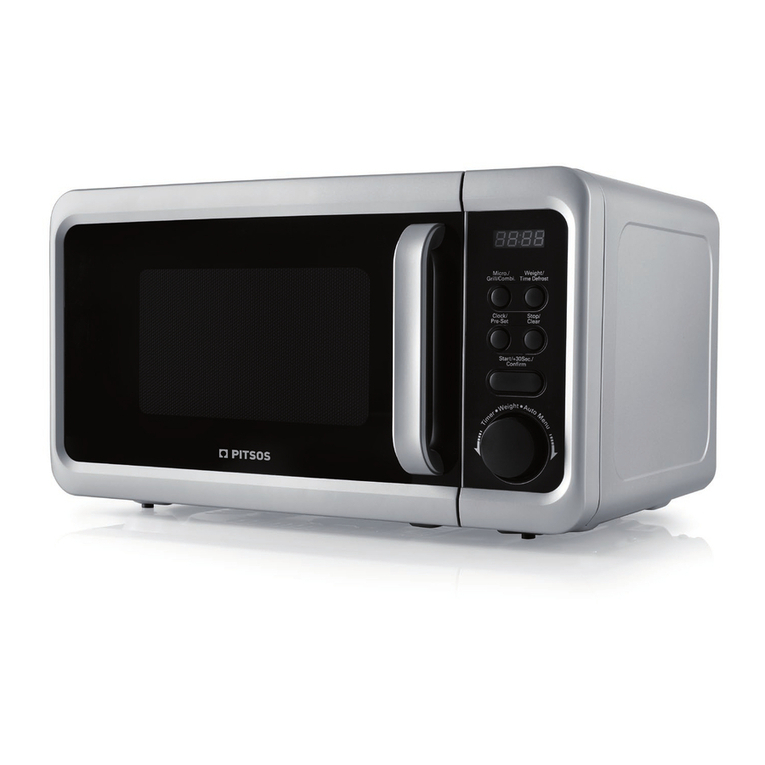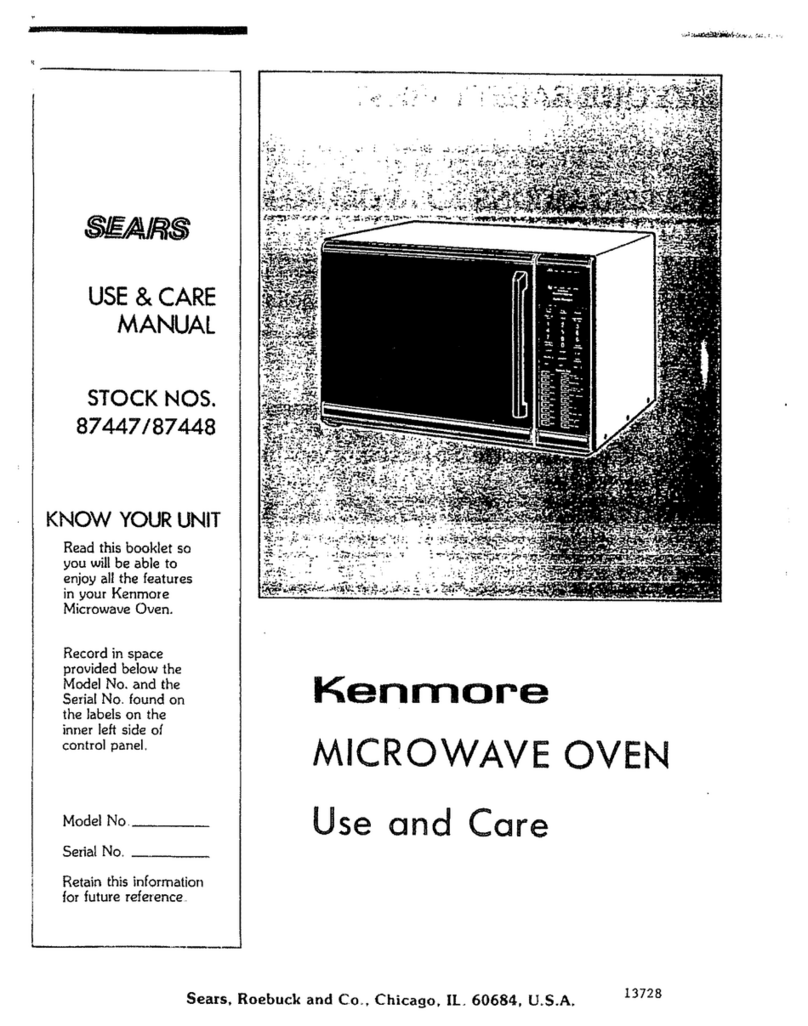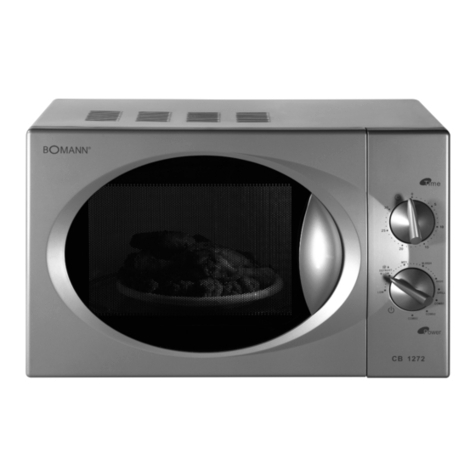2
R-15AM
REMEMBER TO CHECK 3D
1) Disconnect the supply.
2) Door opened, and wedged open.
3) Discharge high voltage capacitor.
WARNING: AGAINST THE CHARGE OF THE HIGH-
VOLTAGE CAPACITOR
The high-voltage capacitor remains charged about 60 sec-
onds after the oven has been switched off. Wait for 60
seconds and then short-circuit the connection of the high-
voltage capacitor (that is, of the connecting lead of the high-
voltage rectifier) against the chassis with the use of an
insulated screwdriver.
Sharp recommend that wherever possible fault-finding is
carried out with the supply disconnected. It may, in some
cases, be necessary to connect the supply after the outer
case has been removed, in this case carry out 3D checks and
then disconnect the leads to the primary of the High voltage
transformer. Ensure that these leads remain isolated from
other components and the oven chassis. (Use insulation tape
if necessary.) When the testing is completed carry out 3D
checks and reconnect the leads to the primary of the High
voltage transformer.
SERVICING
WARNING TO SERVICE PERSONNEL
GB Microwave ovens contain circuitry capable of producing very high voltage and current, contact with following parts will
result in electrocution.
High voltage capacitor, High voltage transformer, Magnetron, High voltage rectifier assembly,High voltage fuse, High
voltage harness.
REMEMBER TO CHECK 4R
1) Reconnect all leads removed from components dur-
ing testing.
2) Replace the outer case (cabinet).
3) Reconnect the supply.
4) Run the oven. Check all functions.
Microwave ovens should not be run empty. To test for
the presence of microwave energy within a cavity, place
a cup of cold water on the ceramic shelf, close the door
and set the power to HIGH and set the microwave timer
for one (1) minutes and push the start key. When the two
minutes has elapsed (timer at zero) carefully check that
the water is now hot. If the water remains cold carry out
3D checks and re-examine the connections to the com-
ponent being tested.
When all service work is completed, and the oven is fully
assembled, the microwave power output should be
checked and a microwave leakage test should be car-
ried out.
NL Magnetronovens bevatten circuits die een zeer hoge spanning en stroom kunnen voortbrengen. Contact met de
volgende onderdelen kan elektrocutie tot gevolg hebben.
Hoogspanningscondensator, hoogspanningstransformator, magnetron, hoogspanningsgelijkrichter, hoogspannings
kabelboom.
VERGEET DE VOLGENDE 3 STAPPEN NIET
1) Haal de stekker uit het stopcontact.
2) Open de deur en zorg ervoor dat hij niet dicht kan vallen.
3) Ontlaad de hoogspanningscondensator.
PAS OP VOOR DE ELECTRISCHE LADING VAN DE
HOOGSPANNINGSCONDENSATOR
De hoogspanningscondensator blijft nog ongeveer 60
seconden lang opgeladen, nadat de oven is uitgeschakeld.
Wacht 60 seconden voordat u de verbinding van de
hoogspannings-condensator (m.a.w. de verbindingsdraad
van de hoogspanningsgelijkrichter) met een geïsoleerde
schroevedraaier kortsluit tegen het chassis.
Sharp beveelt ten sterkste aan dat, voor zover mogelijk,
defecten worden opgespoord wanneer de stekker uit het
stopcontact is gehaald. Soms is het nodig om de stroomtoevoer
weer tot stand te brengen nadat de buitenmantel verwijderd
is. Herhaal dan de bovengenoemde 3 stappen en haal de
electrische draden uit de primaire zijde van de
vermogenstransformator. Zorg ervoor dat deze draden
geïsoleerd blijven van andere elementen en van het chassis
van de oven. (Gebruik zo nodig isolatieband.) Wanneer de
test is uitgevoerd, herhaalt u de bovenstaande 3 stappen en
verbindt u de electrische draden weer aan de primaire zijde
van de vermogenstransformator.
VERGEET DE VOLGENDE 4 STAPPEN NIET
1) Sluit de draden weer aan diezijn losgehaald voor de test.
2) Plaats de buitenmantel weer om het toestel heen (kabinet).
3) Stop de stekker weer in het stopcontact.
4) Zet de oven aan. Controleer alle functies.
Magnetronovens mogen niet leeg aangezet worden. Om te
controleren of er microgolf-energie binnen de oven wordt
geproduceerd, plaatst u een mok met koud water op de
draaitafel van de oven, sluit de deur, zet de oven op HIGH en
stelt de klok van de magnetron in op twee (2) minuten. Wanneer
de twee minuten voorbij zijn (klok staat op nul), controleert u
voorzichtig of het water heet is. Indien het water nog steeds
koud is, herhaalt u de allereerste drie stappen en controleer
nogmaals de aansluitingen naar de geteste onderdelen.
Wanneer alle reparaties zijn uitgevoerd en de oven weer in
elkaar is gezet, moet de het magnetronvermogen worden
gecontroleerd en moet worden gecontroleerd of er geen
microgolflekkage is.
